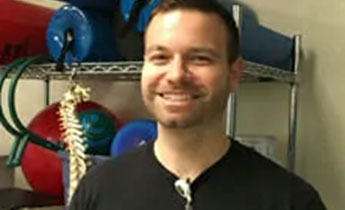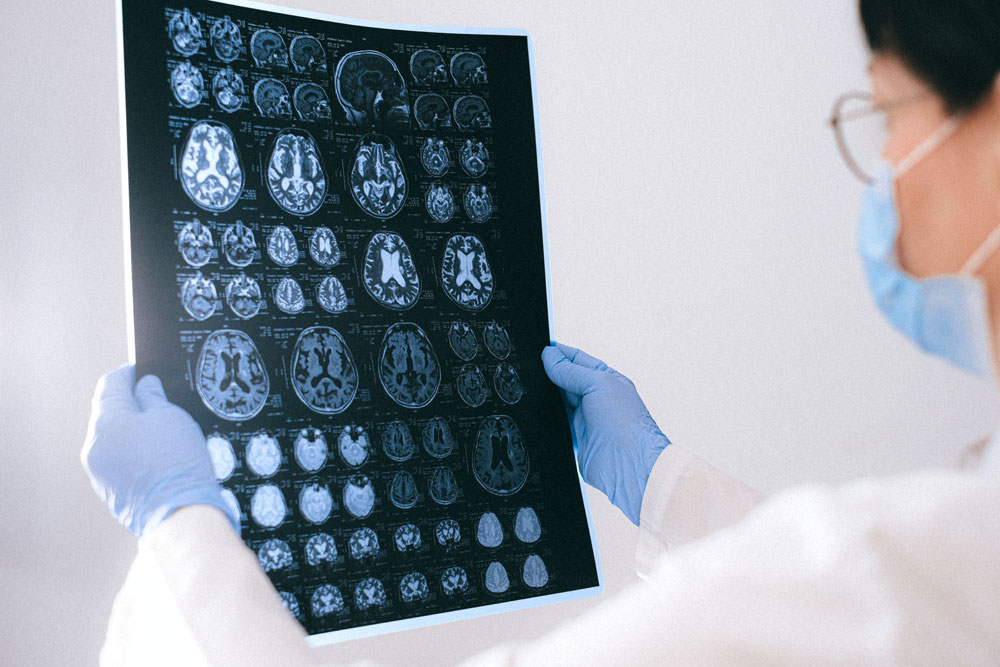Occupational Therapist Steve Bird has worked with nearly 400 stroke patients during his 11 years in the field. He knew early on that he wanted a career in which he could make a difference and impact people’s lives.

Steve’s career choice is rooted in a family event that happened when he was young. His dad was biking home from work when a car hit him. Steve watched therapists work closely with his dad to help him recover and re-gain his independence over the subsequent months.
Recalling that experience years later, Steve volunteered at a local hospital. He worked with occupational therapists in a variety of settings and saw his future unfold before him.
Steve has worked at Weiss for about a decade now, helping patients gain independence after serious health events, such as stroke. Read on to find out why rehabilitation is so important after stroke and what motivates Steve to help people re-build their strength and independence.
- Why is rehabilitation so vital after stroke?
The sooner the person begins rehab, the more likely he or she is to regain lost skills and abilities. The central nervous system is very adaptable and can compensate for lost function after a stroke.
- How long does someone who has had a stroke typically have to participate in rehab?
For some people, rehab is a lifelong process. Typically, the person is on the acute care medical floors for a few days to a week until medically stable. They are then transferred to a rehab facility and receive three hours of therapy daily. Depending on the severity of the stroke, the patient may stay for a few weeks to a month in rehab. The person will then follow up as an outpatient to further address any remaining deficits. Once discharged from outpatient, they continue to work on all of the different strategies learned throughout the rehab process.
- What are some of the more common issues you work with stroke patients to improve?
In many cases, the person has weakness on one side of their body. We help improve range of motion, coordination, and strength through functional tasks (such as reaching into a cabinet to put groceries away or holding a glass of water with their weaker side).
We also work on visual skills, as the patient may have neglected or decreased attention to one side. We may have to teach the person compensatory strategies in order to complete a task (such as putting on a t-shirt or fastening buttons). Also, the person may have had some cognitive changes where we can assist in problem solving and memory skills.
- Regaining independence or ability to complete formerly easy tasks can be difficult after a stroke. How do you help motivate patients?
I try to work on tasks that motivate and challenge the patient. We work together to create goals and find what interests them. For example, if the patient enjoyed tennis, I could incorporate elements of that in the treatment session. I may start with just a simple squeeze of a tennis ball and advance to a forehand swing of the racket as the person advances.
- What inspires you to work with stroke patients?
I enjoy the seeing the patients’ reaction when they are able to accomplish a meaningful task for the first time after the stroke. Previously daunting tasks may seem quite manageable now. Every now and then I hear from former patients on their progress and how therapy has helped them gain back their Independence. That, for me, is where my inspiration and drive comes from.
Find more information on Occupational Therapy and Rehabilitation at Weiss, or call (773) 878-8700.
For more information from the American Stroke Association about regaining independence after stroke, click here.

